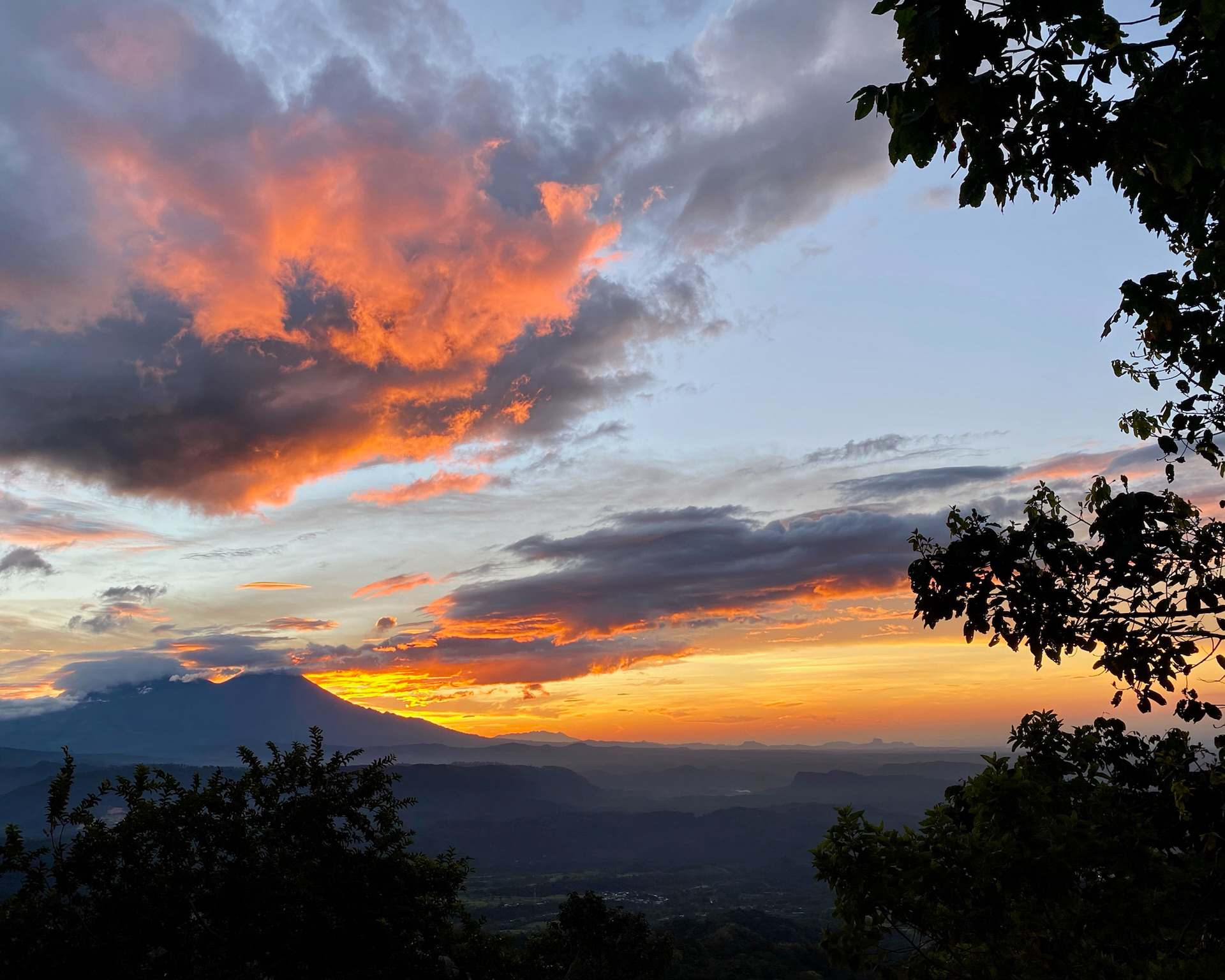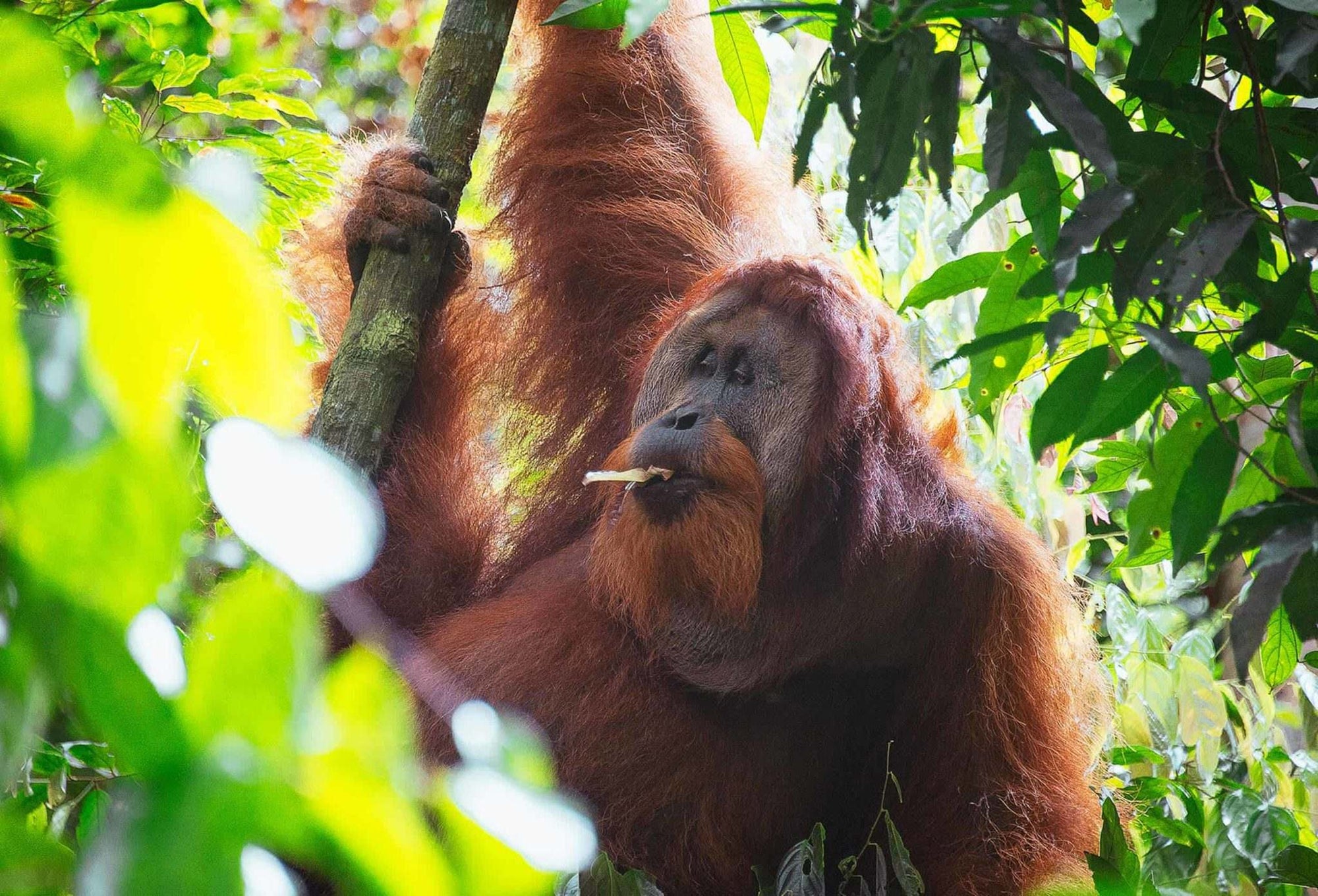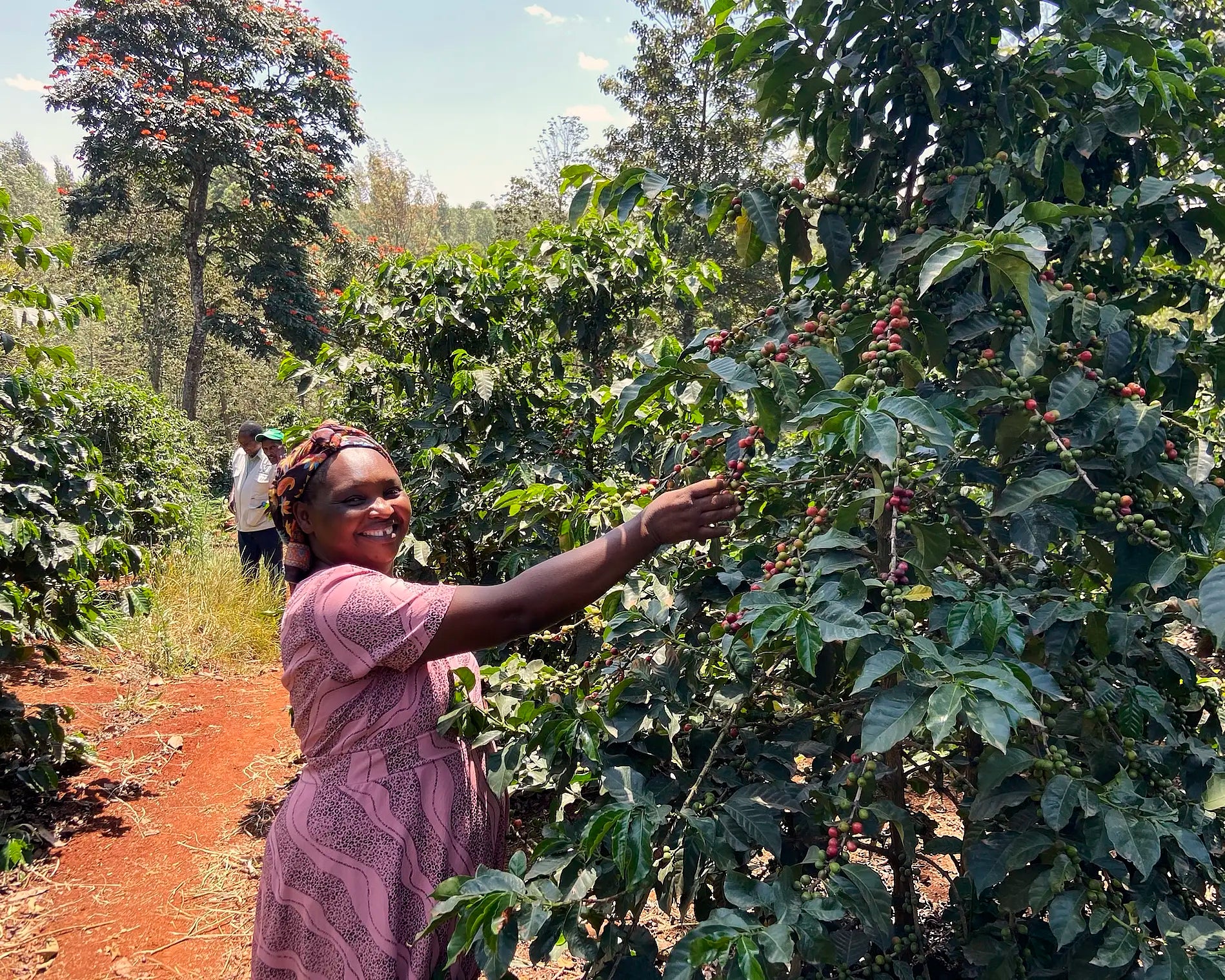Finca San Jeronimo Miramar is located on the slopes of the Atitlan Volcano, Guatemala. It is said that this region is one of the best-kept secrets of the coffee world. Sweet, balanced cups are characteristic of this land, making it a heavenly option for many coffee drinkers. Out of all the volcanic regions, Atitlan has one of the highest organic matter levels, turning the soil into a rich home in which the coffee bushes can thrive. The fertile soil is enhanced by the frontal coastal exposure and the constant humidity provided by this region. The waters from the lake seep through the mountain and filter out through the coffee fields. This is a wonder we had the privilege of enjoying during an evening walk on the final day of our visit.

Slow Jam Process, tradition and innovation
But, first things first. After a warm welcome by the Familia Bressani, and an almost four-hour-long smooth drive from Guatemala City, we arrived at the stately entrance of Finca San Jeronimo Miramar (FSJM). The imposing doors were crafted by local carpenters out of the indigenous bamboo that grows on the farm. Our first stop was the wet mill, where we met Edgar, the man in charge of this part of the process. At the “patios”, we also had the opportunity of seeing honey coffee being dried in beautifully symmetrical rows and left to soak up some sun before they start to rest, as is traditionally done. “Slow Jam Process” is FSJM's own take on the traditional honey process. Familia Bressani explained to us that, at FSJM, there has been enough innovation for it to have its own name. And the coolest part is that the entire process is aligned with how things work on the rest of the farm. At FSJM, they started off by aspiring towards a particular cup profile and then took into consideration the climate, equipment and coffee culture of the mill in order to design this one. They modified two old, traditional de-pulpers and altered them to match the Slow Jam process de-pulpers. They also incorporated an integrated method for receiving the coffee berries that was practically developed and fine-tuned over three full harvests. The term “Slow Jam” is derived from the style of fermentation they implemented that allows for the final product to be extra jammy and complex.
At FSJM it is said that “Good coffee can energise tired bodies and even inspire weary souls”. It is so true of this coffee, which boosts the body with the power of the Atitlan Volcano.


Sharing knowledge and philosophies
Familia Bressani explains that, at FSJM, many years of work have culminated in building a truly integrated regenerative agriculture system that goes beyond the mainstream approach. Their method is a holistic approach to soil and plant health, including plant physiology, soil microbiology, plant nutrition, ecology and agroforestry. Their philosophy also includes other aspects such as flavour building practices, research, developing new coffee cultivating techniques and the creation of value for everyone on the slopes of the Atitlan Volcano. A very important influence that we experienced at FSJM, was the ideal microclimate felt at the coffee plantation, which is shaded by very tall trees like the beautiful “tamborillo” and the “volador'' with its extremely heavy wood. There is also the ground cover provided by the local vegetation. Their goal is to let the native ground cover flourish, while they cut back invasive plants that are imposing on the coffee plantations.
Familia Bressani is always happy to share their knowledge with neighbouring farmers, hoping they, too, can improve their agricultural practices. They believe that fostering a strong and healthy community in the entire Atitlan region enables good living conditions for everyone, bringing and keeping peace and security.


New model with a promising outlook
Later, we took a stroll with Max the foreman and visited the coffee field of FSJM called “Santa Anita”. It is one of Max’s favourite coffee fields. Renovations were underway that will allow them to increase the plant density while maintaining the current humidity and air drainage conditions in the field. This means good yields and healthy coffee bushes. Many variables played a role in this new model, from coffee shade pruning style, to plot slope and grid philosophy, variety and dynamic seed selection, life cycle management system, and even ground cover strategies, amongst many other factors. Familia Bressani said it is a work in progress, but the prospects look promising. We truly enjoyed the breathtaking views in this area.
After a scrumptious lunch made from mostly local ingredients produced on the farm, including delicious cheese, hand-made tortillas, black beans and more, in the rain under a shelter provided by the coffee berries pick-up point, we headed to the nursery. There, we met Hector and got to learn about his fascinating work in the creation of new plant generations for FSJM. Hector showed us the art of “grafting” where the roots of a strong Robusta variety are grafted onto the head of a fine Arabica variety in order to create a more resilient coffee plant. Hector told us that, on a good day, he can complete 700 grafts himself, while the female workers, with their deft, gentle touch, can complete 1000 a day!
We learned and experienced a lot during our stay at FSJM. We could spot some of the over 400 different bird species that frequent the reserve, and also learned more about the farm’s composting process and generally “nerded out” over presentations we shared with one another. We also visited the vegetable garden, saw the cocoa fields and admired a spectacular waterfall after a hike during sunset.

Animo always
On the last day of our stay, we got up at 4 am and headed to a special spot at FSJM where we could admire the active Volcan Fuego. It was spitting some lava as if putting on a show just for us, followed by fumaroles and the most spectacular sunrise. This was not just a natural wonder, but an out-of-this-world experience that we soaked up with our friends from FSJM ViCAFE San Jeronimo (Slow Jam) coffee and ViCAFE San Jeronimo Manchame coffee while savouring roasted coffee that we brought back from Zurich. It was a pleasure to bring it back to the soil where it was produced, brewed by ourselves right there at the source, served warm inside our ViCAFE Miir travel mugs.
“The people of the Atitlan Volcano Slopes are grateful for all the opportunities”, and so are we at ViCAFE. We are grateful for the opportunity of sharing this marvelous learning experience and getting to know the most important and happy human beings along this coffee chain among ViCAFE and Finca San Jeronimo Miramar, our dear and long-term partner in Guatemala. And, like Familia Bressani always likes to say: “Animo always!”





